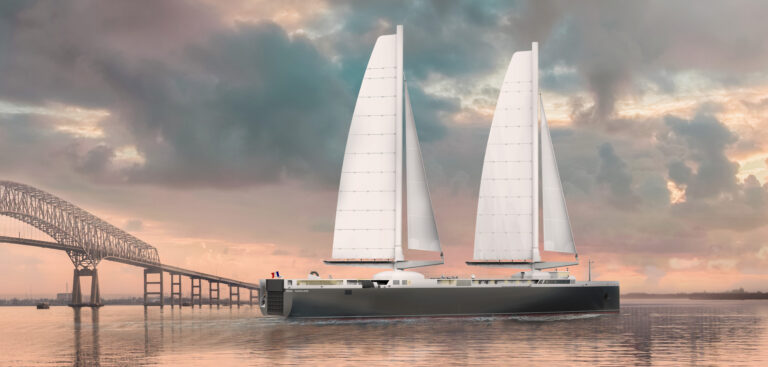Having secured a budget of more than €60m (US$65m), Neoline has begun construction of the Neoliner. The 136m-long ro-ro vessel will use two 76m-high SolidSail folding carbon masts with a 3,000m2 sail area to deliver the majority of propulsion when weather patterns enable it.
As the designer of the wind-propelled solution, Chantiers de l’Atlantique will supply the Neoliner with its SolidSail rigging system. D-ICE Engineering will deliver the vessel’s advanced routing, navigation, piloting and monitoring systems, which have been adapted to suit the wind propulsion systems.
The sailing cargo vessel – which is being built by RMK Marine at its shipyard on the coast of the Marmara Sea in Turkey – will also be equipped with an auxiliary engine, marine gasoil desulfurized generators and three transverse thrusters to enable operations in ports and time-efficient service. Each exhaust will benefit from selective catalytic reduction to reduce NOX emissions.
“The International Maritime Organization has set targets to reduce carbon emissions of all ships by 40% by 2030, by 70% by 2050, and ultimately to become carbon zero,” explained Adnan Nefesoğlu, president and general manager of RMK Marine. “In accordance with these goals, we use environmentally friendly and carbon-footprint-reducing technologies in the projects we realize. On the other hand, we find it very valuable that renewable energy sources, particularly wind energy, find application in our own sector.”
“SolidSail is a revolutionary technology that the teams of the Chantiers de l’Atlantique have thought out and developed with passion and conviction over the past 10 years,” explained Laurent Castaing, CEO of Chantiers de l’Atlantique. “It is with great pride that we see that what started as an ambitious research and development project, [will now] come to life and be deployed on cargo ships.”
“Through the construction and commissioning of this first Neoliner, our foremost objective is to demonstrate under real operational conditions the potential of main propulsion by wind for the Merchant Navy,” commented Jean Zanuttini, Neoline’s CEO. “Our second objective is to repeat this success as quickly as possible, by encouraging the creation of an entire fleet powered by the force of wind as a main propeller. This is an unprecedented opportunity to do our part in the energy transition and to pick up the thread of the history of maritime transport under sail.”



